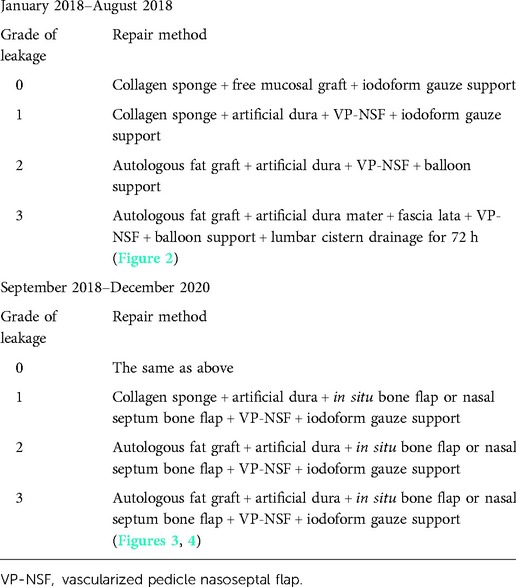

Sometimes, a drain called a lumbar drain may need to be placed for a few days after surgery. Most patients stay in the hospital for one or two nights after this type of surgery. What is recovery like after CSF leak repair? The sinus is filled with air, as a healthy sinus should be.
#Cerebrospinal fluid leak repair cpt code Patch#
After surgery, the patch has healed well and the sinus is much healthier. The sinus looked gray on the CT scan before surgery, showing that it is filled with fluid. The patient had a CSF leak involving a sinus called the sphenoid sinus. The images below show the changes that can be seen after a successful endoscopic CSF leak repair.

Sometimes, a few different types of materials are used so that multiple “layers” can close the hole. Then, the patch can be carefully placed to cover the affected area. This can help make sure that the patch covers the entire defect. Sometimes, the surgeon may have to use synthetic materials or materials taken from other parts of the body.Īfter finding the hole, the surgeon works to make sure the entire hole can be seen. The bone is often taken from the nasal septum. Mucosa is the membrane that covers the inside of the nose and sinuses. Some of the materials used from the inside of the nose include things called mucosa and septal bone. Often, the surgeon can use some of the tissue from the inside of the nose. Many different materials can be used to fix the hole. After finding the hole, a patch can be placed to seal the leak. The surgeon opens the sinuses so that the hole causing the leak can be seen. In this type of surgery, the surgeon will work through the inside of the nostrils with a nasal endoscope. This type of surgery is called endoscopic nasal CSF leak repair. Surgeons can work through the inside of the nostrils to get to hole causing the leak. Now, most nasal CSF leaks can be repaired with less invasive surgery. With this type of procedure, a neurosurgeon would work through the skull to find and repair the hole. In the past, many patients had to undergo a procedure called a craniotomy to successfully repair the holes leading to CSF leaks. How are nasal CSF leaks repaired?įortunately, most CSF leaks that start in the nose can be successfully treated with minimally invasive surgery. A CSF leak can create serious health problems. Nasal CSF leaks happen when CSF drips out through the nose. However, we could perform in transmastoid approach with only of removal of ossicles to obtain clear view of lesion and successfully manage the defect.Cerebrospinal fluid (also known as CSF) is the fluid that normally sits around the brain and spine. In this case, the lesion is located anteromedial side of middle cranial fossa so the combined approach could be suitable. It causes hearing disturbance that can be restored with ossicular reconstruction in the same or second stage. In contrast, the transmastoid approach is technically easier to perform, has fewer risks and complications, and anterior defect in the tegmen tympani may require the removal of ossicles to ensure better exposure of the lesion. But, this approach has a great potential for complications and should be performed by experienced operators. The favored technique is a combined transmastoid-middle fossa approach, which visualizes the entire tegmen and definite closure of the entire region. 3, 9, 10) Surgeons can choose between these options based on the location and size of defect, their experience or preference, and better surgical view. There are three surgical approaches for the repair of the CSF otorrhea: transmastoid approach, middle fossa craniotomy, and a combined approach. 4) observed an incidence of 22% of pit holes created by arachnoid granulations in the middle fossa surface. Gacek 3) identified an 8.5% incidence of arachnoid granulations in the posterior fossa of the temporal bone, while Ferguson, et al. Aberrant arachnoid granulations located in the dural surface of the temporal bone are thought to be responsible for communication between the CSF space and the mastoid air cell system. 3) These granulations enlarge with age and may eventually erode bone. 2) The arachnoid granulation theory postulates that arachnoid granulations that do not find a venous termination during embryonic development come to lie in a blind-end against the inner bony surface of the skull. This enlargement leads to eventual dural herniation and subsequent bony and dural thinning with resultant CSF otorrhea.

The first is the congenital defect theory, which posits that tiny defects within the tegmen caused by aberrant embryologic development enlarge over time secondary to constant CSF pressure. There are two main theories concerning the etiology of bony defect. The pathophysiology of spontaneous CSF otorrhea is not entirely clear.


 0 kommentar(er)
0 kommentar(er)
